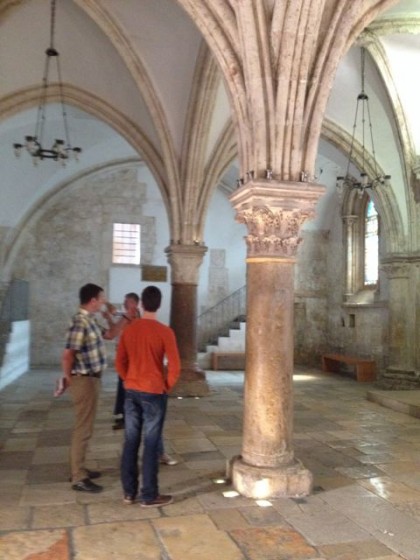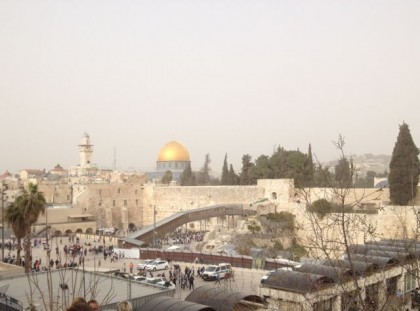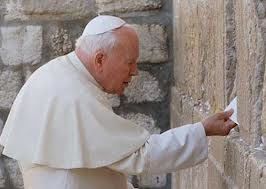The potent places of salvation history
Katie van Schaijik | Mar 19, 2014 | 2 cmts
One strong impression from our visit to Israel earlier this month is of the geographical concentration of ground zero of salvation history. The place is small, and the spiritual imagery that pervades it incredibly dense. Today's readings (for the Feast of St. Joseph) bring the point home again.
The LORD spoke to Nathan and said:
“Go, tell my servant David,
‘When your time comes and you rest with your ancestors,
I will raise up your heir after you, sprung from your loins,
and I will make his kingdom firm.
It is he who shall build a house for my name.
And I will make his royal throne firm forever.
I will be a father to him,
and he shall be a son to me.
Your house and your kingdom shall endure forever before me;
your throne shall stand firm forever.’”
I know now that David rests on Mt. Zion, beside the Church of the Dormition, just outside the city walls of Jerusalem. Right beside his tomb—practically touching his tomb—is the "upper room" where Jesus had the Last Supper with his disciples "on the night he was betrayed." It's the room where he offered his flesh and blood. And it's the room where the Holy Spirit descended on the Apostles on Pentecost. In other words, it's the room where the Church was born, the "house of God" that will stand firm forever and against which the gates of hell will not prevail. Here is a picture of the upper room.

Just up the hill from that spot is the Temple Mount—the site of the first temple, built by David's son Solomon, and the second temple—the temple that was standing in Jesus's day, then destroyed by the Romans in A.D. 69. The temple was built on the very site where Abraham offered his son, Isaac, as a sacrifice to God. Its the one the Jews had hoped would stand forever.
Since the destruction of that temple, no sacrifice has been offered. In Judahism, there is only one temple. All that remains of it now—revealing its immensity and grandeur—is the Western Wall, the Wailing Wall, where Jews go to mourn and cry out to God. I went there too—to the women's side—tucking my petitions into a crevice, and adding my prayers and tears to the steady stream of human sorrow continually poured out to God from that place.

The golden domed Mosque that stands there now is dwafed by the remaining wall. (Only Muslims are allowed to visit the mosque.)
Here is John Paul II adding his own petitions to the wall in 2000.

Among the reflections that all this occasioned in me, is the thought of the importance God seems to place on poetry, prophesy, imagery, and concreteness in the religious life.
Human beings crave meaning; we need meaning. We are oppressed by meaninglessness and abstraction. The wealth—historical, philosophical, theological, cultural, artisitc—that God offers us in and through the Church is inexhaustible.

Comments (2)
Kate Whittaker Cousino
Mar 19, 2014 10:31am
The term that springs to mind is "the scandal of particularity"--which is, of course, not scandalous at all if we recognize that God's choice to work through particular, concrete people, places, and events is a gift that allows us better to know and love Him through these things that can be envisioned, experienced, touched and related to. We are particular and concrete, and we respond to the particular and concrete.
Katie van Schaijik
Mar 20, 2014 4:21am
Yes, exactly so. Particular and concrete, and also layered with meaning that extends back and forward in time. In Christianity, the concrete and actual is also symbolic and prophetic.
St. Francis literally rebuilt the church of San Damiano, which became a symbol of his spiritual rebuilding of the Catholic Church.
King David's offspring, Solomon, built a literal temple in that place. His descendent, the promised Messiah, who was presented to God in that temple, was the New Temple, and the One Sacrifice.
At the rock on which Jesus was crucifed, there is a crack, said to have been caused by the lightening that struck as He died. That crack goes down to "the skull", said to be the skull of Adam.
There's a world of theology in the stones of Jerusalem.